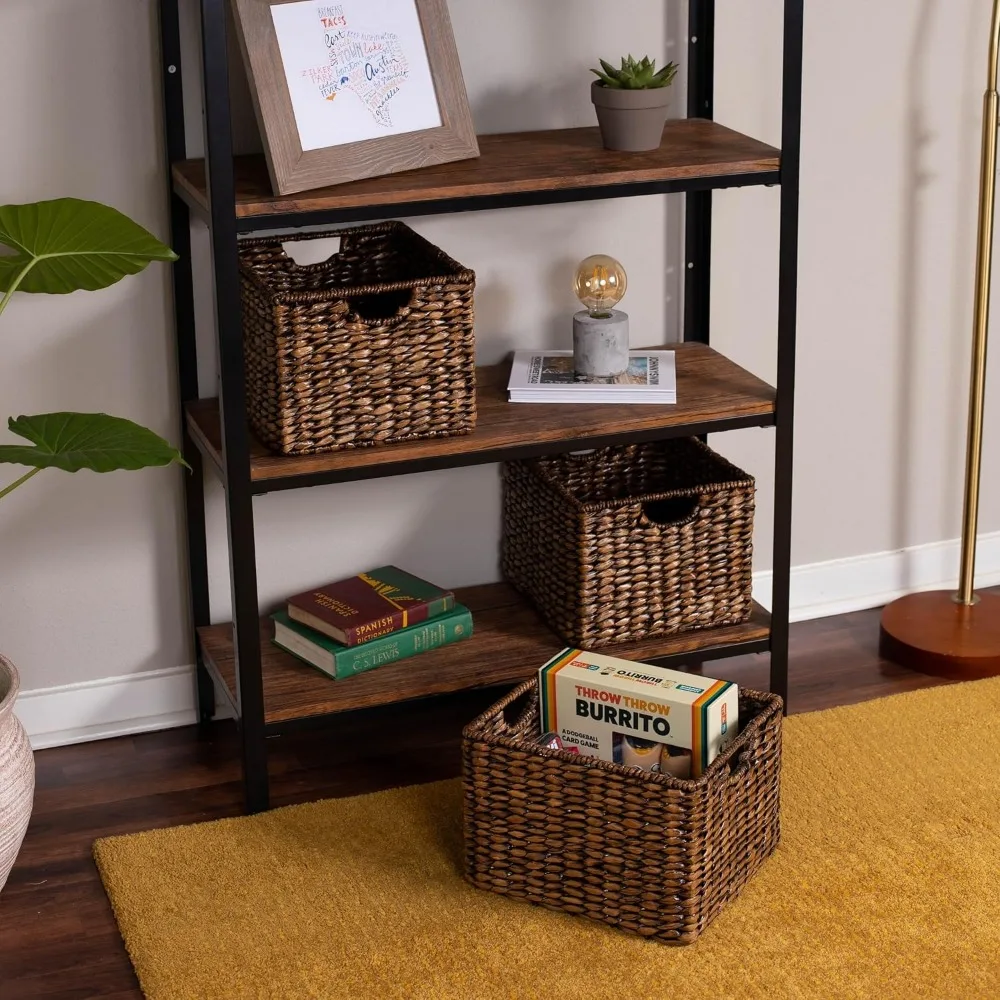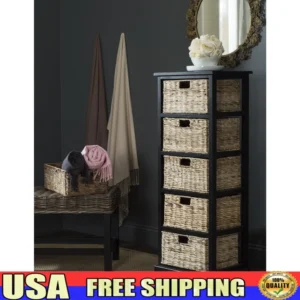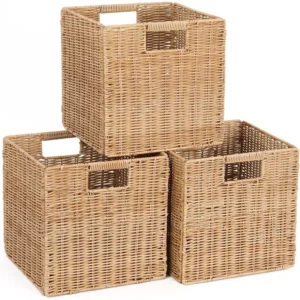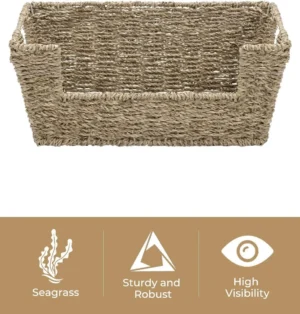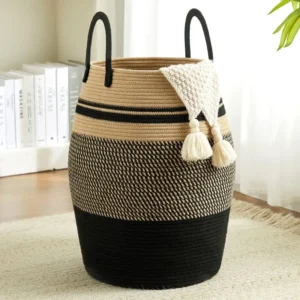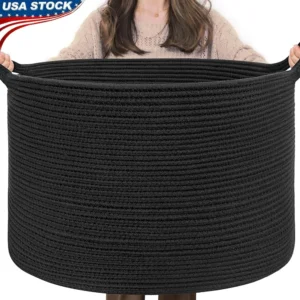1. Understanding Different Basket Materials for Proper Care
Knowing what your basket is made from is the first step to proper care. Different materials require specific maintenance approaches to keep them looking their best and functioning properly for years to come.
Basket materials generally fall into two main categories:
Natural fibers:
– Wicker (typically made from willow)
– Rattan (from climbing palms)
– Bamboo (from the bamboo plant)
– Seagrass (dried marsh grass)
– Jute (from plant fibers)
– Sisal (from agave plants)
– Reed (from tall grasses)
Manufactured materials:
– Plastic (synthetic polymers)
– Metal (steel, aluminum, wire)
– Fabric (cotton, polyester, canvas)
– Wood (pine, oak, bamboo)
– Synthetic resin (plastic designed to mimic natural materials)
The way your basket is constructed directly impacts how you should care for it. Tightly woven natural fibers might trap dust differently than open wire baskets, while painted wood requires different cleaning methods than unfinished wood.
Not sure what your basket is made of? Natural materials like wicker and rattan tend to be lightweight but sturdy, with slight variations in color and texture. They often have a distinctive natural scent. Synthetic materials typically have more uniform coloring and may feel smoother or more consistent to the touch.
The extensive selection of wicker baskets comes in various constructions and weave patterns that each require specific care approaches. Understanding your basket’s foundation helps you select appropriate cleaning methods that won’t cause damage.
2. Daily Care and Protection for All Basket Types
Regardless of material, all baskets benefit from regular preventative maintenance. These simple daily and weekly habits can significantly extend your basket’s life and appearance:
Dusting techniques:
– Use soft-bristled brushes for natural fibers
– Wipe down smooth surfaces with microfiber cloths
– Use a vacuum with brush attachment on low setting for fabric baskets
– Pay special attention to crevices and tight weaves
Proper handling methods:
– Lift from the bottom rather than by handles or rim
– Avoid dragging across surfaces
– Don’t overload beyond weight capacity
– Distribute weight evenly to prevent warping
Positioning plays a key role in basket longevity. Keep baskets away from direct sunlight, which can fade colors and weaken natural fibers. Similarly, avoid placing baskets near heat sources like radiators or heating vents, which can dry out and crack natural materials.
For baskets that hold food, plants, or potentially damp items, using a liner creates a protective barrier that prevents staining and moisture damage. This is especially important for wicker laundry baskets that might occasionally contain damp clothing.
Remember that consistent light maintenance is much easier than trying to restore a severely damaged basket. A quick weekly dusting and proper daily handling will save you considerable effort later.
3. Natural Fiber Baskets: Essential Cleaning Techniques
Natural fiber baskets like wicker, rattan, bamboo, and seagrass require gentle cleaning techniques to preserve their beauty and structural integrity. Regular cleaning prevents dirt buildup that can be difficult to remove later.
Dry cleaning process (weekly maintenance):
1. Take the basket outdoors if possible
2. Use a soft brush to loosen dust and debris
3. Focus on crevices and tight weaves
4. Wipe with a slightly damp microfiber cloth
5. Allow to air dry completely before using
For more thorough cleaning (monthly or as needed):
- Prepare a mild cleaning solution: Mix 1 tablespoon mild dish soap in 1 quart (1 liter) of warm water
- Test on an inconspicuous area first
- Dip a soft cloth in the solution and wring until barely damp
- Gently wipe the basket surfaces, avoiding saturation
- Use a soft toothbrush for tight spaces
- Wipe with a clean damp cloth to remove soap residue
- Air dry completely in a well-ventilated area (avoid direct sunlight)
Pay special attention to decorative elements and tight weaves where dirt can accumulate. Never submerge natural fiber baskets in water as this can weaken the fibers and cause warping or mold growth.
Our collection of rattan baskets showcases the beauty of natural fibers, and with proper care, these pieces can maintain their appeal for many years. For deeper cleaning needs, non-toxic basket cleaning solutions provide effective alternatives that won’t damage delicate natural materials.
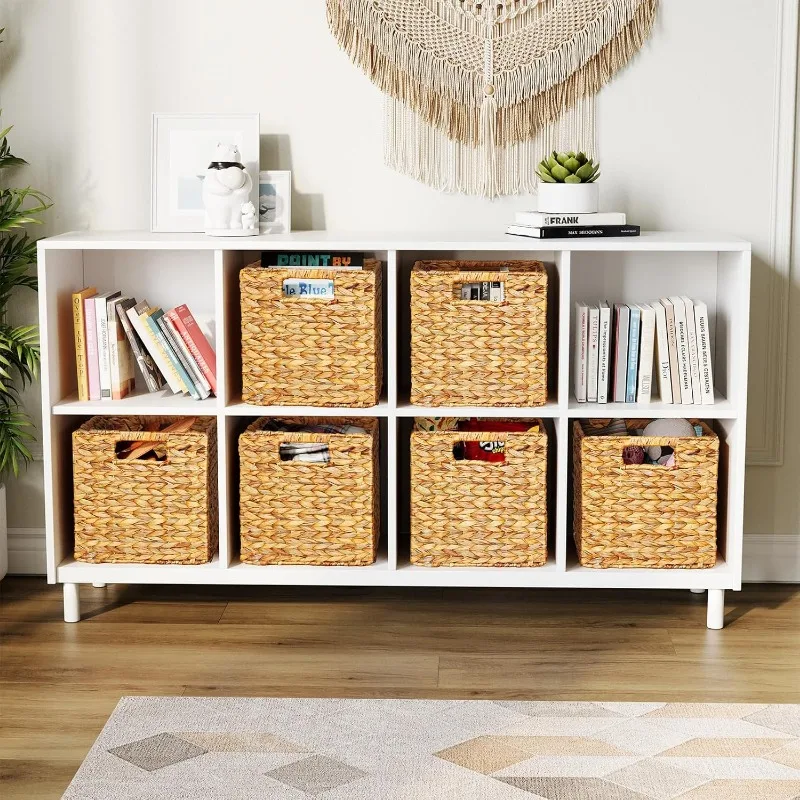
4. Jute and Sisal Basket Maintenance: Special Considerations
Jute and sisal baskets require extra caution during cleaning due to their exceptional sensitivity to moisture. These fibers can quickly weaken, discolor, or develop mildew when wet.
Why moisture is particularly problematic:
– Jute and sisal absorb water rapidly
– These fibers tend to hold moisture deep within strands
– Drying takes significantly longer than other natural fibers
– Moisture can cause significant shrinking and warping
– Wet jute develops a distinctive musty odor that’s difficult to remove
Best maintenance practices:
– Rely primarily on dry cleaning methods
– Use soft brushes to remove surface dust
– Vacuum with brush attachment on low setting
– Keep in dry environments with good air circulation
– Rotate periodically to ensure even wear
– Use in areas with minimal moisture exposure
For spot cleaning when absolutely necessary:
1. Create a very minimal amount of foam from mild soap and water
2. Apply only the foam using a soft brush
3. Blot immediately with a clean, dry cloth
4. Air dry completely with good air circulation
5. Use a fan to speed drying if needed
If accidental water exposure occurs, immediately blot excess moisture with absorbent towels and allow to air dry completely in a well-ventilated area. Consider placing in gentle sunlight for brief periods to aid drying, but avoid prolonged exposure which can fade colors.
The collection of woven storage baskets includes beautiful jute and sisal options that perform best in dry environments like living rooms or bedrooms.
5. Fabric and Cloth Basket Care: Washing and Preservation
Fabric baskets offer the advantage of being generally washable, but proper care depends on the specific material and construction.
First, always check for care labels sewn into the basket. These provide manufacturer guidance on washing temperatures, acceptable cleaning methods, and drying instructions. If no label exists, proceed with caution using these general guidelines:
For minor stains:
1. Create a solution of mild detergent and cool water
2. Apply to the stain using a clean white cloth
3. Blot rather than rub to avoid spreading the stain
4. Rinse by blotting with clean water
5. Air dry completely
For washable fabric baskets:
Hand washing (preferred method):
1. Fill a sink or tub with lukewarm water and mild detergent
2. Submerge and gently agitate for a few minutes
3. Rinse thoroughly with clean water
4. Press (don’t wring) to remove excess water
5. Reshape while damp
6. Air dry flat or over a form to maintain shape
Machine washing (when appropriate):
1. Use a gentle cycle with cold water
2. Place inside a mesh laundry bag if possible
3. Use mild detergent without bleach
4. Remove promptly when cycle completes
5. Reshape while damp
6. Air dry completely
Different fabrics require specific care approaches. Canvas baskets tend to be more durable and can handle more thorough cleaning, while delicate cotton might require gentler handling. Polyester blends often dry more quickly and resist wrinkles better than pure natural fibers.
For baskets with removable liners, wash the liner separately following fabric-appropriate methods. For sewn-in liners, follow the guidelines for the most delicate material present in the basket.
Implementing effective wicker laundry basket storage ideas can help minimize fabric basket soiling and reduce the frequency of needed cleanings.
6. Plastic and Metal Baskets: Durable Cleaning Methods
Plastic and metal baskets generally tolerate more vigorous cleaning methods than their natural fiber counterparts. Each material has specific care requirements and considerations:
| Plastic Baskets | Metal Baskets |
|---|---|
| Warm, soapy water is usually sufficient | Check for rust spots before cleaning |
| Can typically handle dishwasher cleaning (top rack) | Avoid soaking for extended periods |
| Mild dish soap works well | Use metal-specific cleaners for polished surfaces |
| Soft brushes won’t scratch surfaces | Dry thoroughly after cleaning |
| Avoid abrasive cleaners that can scratch | Apply mineral oil to prevent rust |
| Hydrogen peroxide helps remove discoloration | Use appropriate metal polish to restore shine |
| Keep away from high heat that can warp | Check and tighten hardware regularly |
To remove discoloration from white or light-colored plastic baskets, create a paste of baking soda and water, apply to the affected area, and let sit for 15-20 minutes before rinsing. For particularly stubborn stains, a solution of one part bleach to four parts water can be effective, but always test in an inconspicuous area first.
For metal baskets showing signs of rust, use a soft cloth with white vinegar to gently rub affected areas. For stubborn rust, a mixture of lemon juice and salt can create a natural abrasive paste. After removing rust, thoroughly dry the basket and consider applying a thin coat of clear paste wax for additional protection.
Both materials benefit from regular wiping with a dry cloth to prevent dust accumulation. For more traditional storage options that require less intensive cleaning, consider wicker storage trunks which combine durability with classic aesthetics.
7. Wood and Synthetic Wicker Maintenance: Balance Between Durability and Care
Wood and synthetic wicker baskets offer distinctive benefits, and each requires a balanced approach to maintenance that preserves appearance while leveraging their inherent durability.
Wood basket care:
– Dust regularly with a soft, dry cloth
– For deeper cleaning, wipe with a cloth dampened with mild soapy water
– Clean in the direction of the wood grain
– Dry immediately and thoroughly with a clean towel
– Avoid soaking or saturating the wood
– Apply appropriate wood conditioner based on finish:
– Mineral oil for unfinished wood
– Beeswax polish for painted/sealed wood
– Specialized wood cleaner for exotic wood varieties
Synthetic/resin wicker care:
– Offers greater water resistance than natural wicker
– Can be cleaned with a garden hose for outdoor pieces
– Indoor synthetic pieces should be wiped with damp cloth
– Use mild detergent for stubborn dirt or stains
– Soft brushes can reach between weaves without causing damage
– No need to worry about moisture damage or drying time
For outdoor synthetic baskets, occasional exposure to sunlight and UV rays can cause fading over time. To restore color, specialized plastic restoring products can help bring back the original appearance. Apply according to product instructions and ensure proper ventilation.
The significant advantage of synthetic wicker is its resistance to mold and mildew. However, if you notice discoloration, follow the guidance in our ultimate guide removing mold baskets for safe treatment methods.
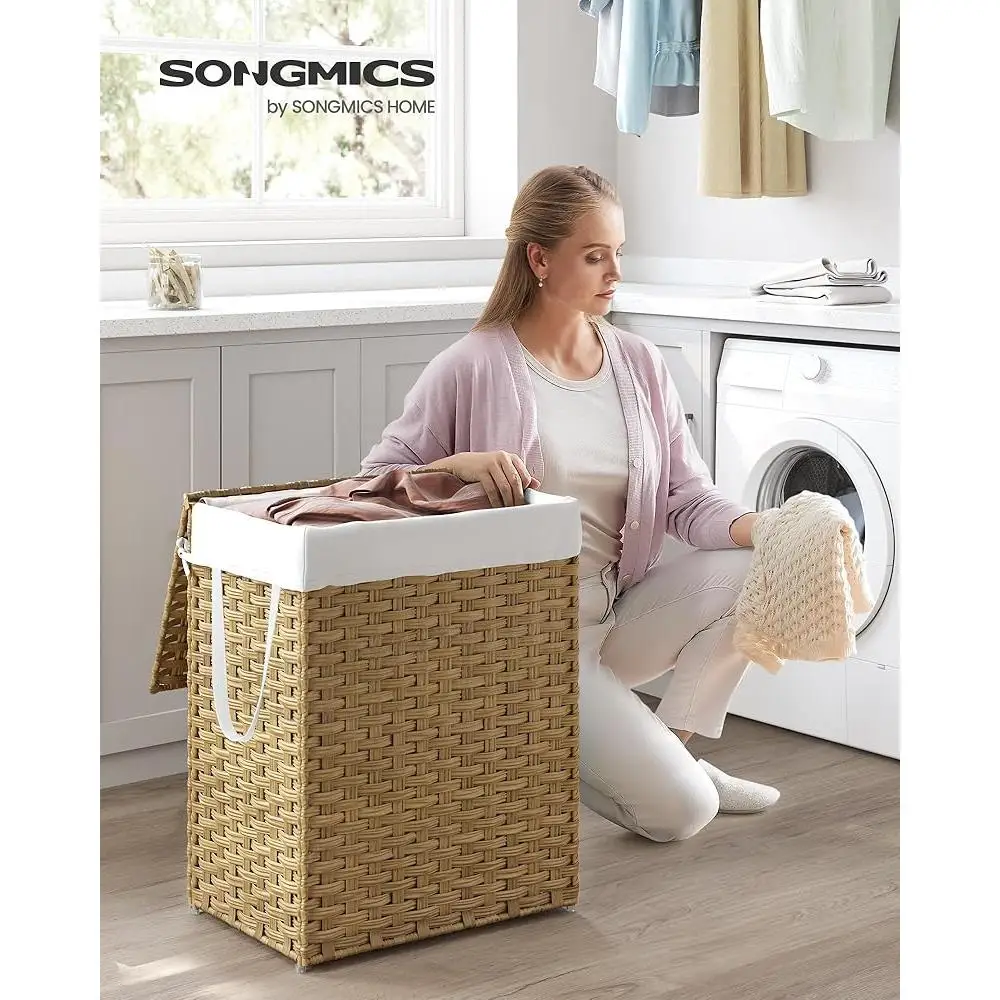
8. Tackling Mold and Mildew: Prevention and Treatment
Mold and mildew pose significant threats to basket longevity, especially for natural fiber baskets stored in humid environments. Recognizing early warning signs can help prevent extensive damage:
Early indicators of mold/mildew:
– Musty, damp odor
– Green, black, or white spotting on surfaces
– Discoloration in previously uniform areas
– Softening of fibers
– Increased brittleness or flaking
Prevention is always easier than treatment. Maintain relative humidity below 60% in storage areas, ensure good air circulation around baskets, and avoid storing in basements, attics, or other potentially damp locations. Using silica gel packets placed in storage containers can help absorb excess moisture.
Material-specific treatment approaches:
For natural fibers:
1. Take the basket outdoors to prevent spore spread
2. Use a soft brush to remove visible mold
3. Create a solution of 1:1 white vinegar and water
4. Apply lightly with a cloth or soft brush
5. Allow to dry completely in sunlight if possible
6. For persistent issues, try a solution of 1 tablespoon baking soda in 1 quart (1 liter) of water
For fabric baskets:
1. Check care label for washability
2. If washable, launder with 1/2 cup white vinegar added to rinse cycle
3. Air dry in sunlight if possible
4. For non-washable fabrics, use vodka in a spray bottle to kill mold spores
For synthetic materials:
1. Create a solution of 1 tablespoon dish soap in 1 quart (1 liter) of warm water
2. Wipe with the solution using a soft cloth
3. For persistent mold, a solution of 1 part bleach to 10 parts water is usually safe
Consider using wicker baskets lids to provide additional protection against airborne mold spores and moisture, especially in bathrooms or other high-humidity areas.
9. Removing Stubborn Stains and Odors
Even with regular maintenance, baskets sometimes develop stubborn stains or persistent odors. Different materials and stain types require specific approaches:
Food and beverage stains:
– For natural fibers: Create a paste of baking soda and water, apply to stain, let dry, then brush away
– For plastic: Mix 1 part hydrogen peroxide with 2 parts water, apply with cloth, rinse
– For fabric: Pre-treat with enzyme-based stain remover before washing
– For wood: Wipe immediately with damp cloth, then dry thoroughly
Ink and marker stains:
– For plastic: Rubbing alcohol on a cotton ball can lift ink
– For natural fibers: Diluted white vinegar applied lightly can help
– For fabric: Hairspray containing alcohol can break down ink before washing
– For metal: Nail polish remover (acetone) works on most metal surfaces
Odor elimination techniques:
1. Sunshine and fresh air – natural deodorizers for most baskets
2. Baking soda – sprinkle, let sit overnight, then vacuum
3. White vinegar – place a small bowl near (not in) the basket overnight
4. Activated charcoal – place in a small dish inside the basket for 24-48 hours
5. Coffee grounds (dried) – place in a small open container in the basket for natural scent absorption
For persistent food odors in kitchen baskets, try wiping with a cloth dampened with vanilla extract or lemon juice, then allow to air dry. For laundry baskets that develop musty smells, regular emptying and proper effortless laundry organization wicker baskets can prevent odor-causing moisture buildup.
Always start with the gentlest cleaning solution before progressing to stronger methods, and test any cleaning product on an inconspicuous area first to ensure it doesn’t cause damage or discoloration.
10. Reshaping and Simple Repairs for Damaged Baskets
When baskets become misshapen or damaged, many can be restored with simple techniques rather than replaced. Before attempting repairs, assess whether the basket is worth saving based on its condition, value, and sentimental importance.
Reshaping warped natural fiber baskets:
1. Lightly mist the basket with water using a spray bottle
2. Gently manipulate the basket back to its original shape
3. Secure with clothespins or clips if needed
4. Allow to dry completely in the desired shape
5. For stubborn warping, weight the basket into shape during drying
Repairing loose weaves:
1. Identify loose or broken strands
2. Gently tuck loose ends back into the weave pattern
3. For broken pieces, apply a small amount of clear-drying craft glue
4. Secure with small clips until dry
5. Trim any protruding ends carefully
Fixing loose handles and hardware:
1. Tighten any screws or fasteners
2. For woven handles, reinforce with matching fiber or thin wire
3. Apply wood glue to loose wooden handles
4. Secure until completely dry
5. Test weight capacity before using
Addressing splits in wooden baskets:
1. Clean the area thoroughly
2. Apply wood glue to the split
3. Clamp until completely dry
4. Sand lightly if needed
5. Apply matching wood stain if necessary
For more extensive basket restoration techniques, including replacement of damaged sections, our complete guide basket preservation provides detailed instructions for more complex repairs.
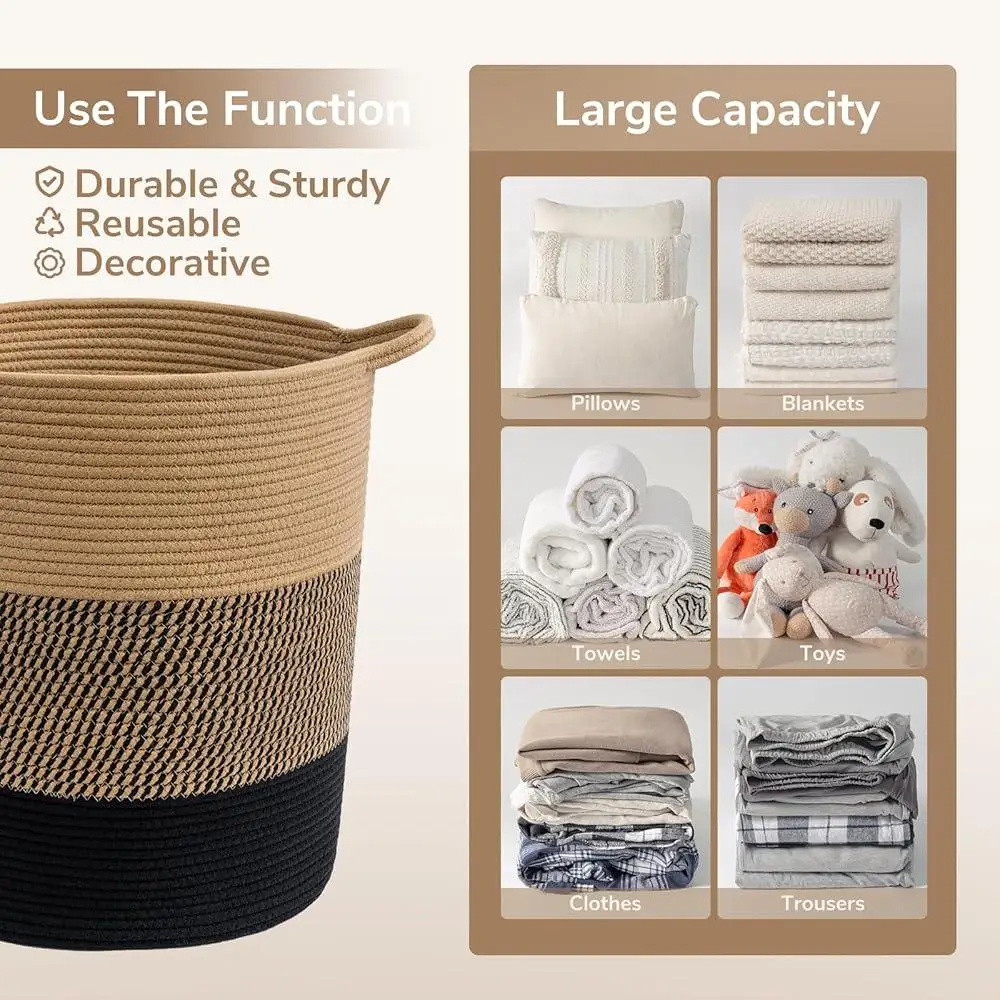
11. Seasonal Storage Solutions to Preserve Basket Integrity
When storing baskets seasonally or for extended periods, proper preparation helps maintain their condition and prevents damage.
Pre-storage cleaning checklist:
– Clean thoroughly according to material-specific guidelines
– Ensure baskets are completely dry before storage
– Remove any removable liners and store separately
– Check for and treat any signs of mold or pests
– Repair any minor damage before storage
Ideal storage conditions:
– Cool, dry environment (30-50% humidity)
– Away from direct sunlight
– Good air circulation
– Protected from extreme temperature fluctuations
– Elevated from concrete floors
– Safe from pest access
To prevent pest infestations, consider adding cedar blocks, lavender sachets, or bay leaves to storage areas. These natural deterrents are safe for basket materials and prevent insects from making homes in your stored items.
Safe stacking practices:
– Place largest, sturdiest baskets at the bottom
– Nest similar-sized baskets when possible
– Insert acid-free tissue paper between nested baskets
– Never place heavy items on top of baskets
– Avoid stacking different materials together
– Check periodically for signs of pressure damage
Black Wicker Baskets, Rattan Storage Baskets, Tall Wicker Baskets, Wicker Shelf Baskets, Woven Storage Baskets
5-Tier Distressed Black Wood Frame Storage Tower with Removable Wicker Baskets for Home Organization$715.80 Select options This product has multiple variants. The options may be chosen on the product pageWicker Laundry Baskets, Woven Laundry Baskets, Woven Storage Baskets
$392.02 Select options This product has multiple variants. The options may be chosen on the product pageRattan Shelf Baskets, Rattan Storage Baskets, Small Wicker Baskets, Square Wicker Baskets
Square Plastic Wicker Storage Baskets Set of 3 with Collapsible Design for Cube Storage Organization$185.47 Select options This product has multiple variants. The options may be chosen on the product pageWicker Baskets with Handles, Wicker Storage Baskets, Woven Storage Baskets
$137.92 Select options This product has multiple variants. The options may be chosen on the product pageLarge Wicker Laundry Baskets, Tall Wicker Baskets, Woven Laundry Hampers, Woven Storage Baskets
$130.54 Select options This product has multiple variants. The options may be chosen on the product pageWicker Blanket Baskets, Woven Laundry Baskets
$89.60 Select options This product has multiple variants. The options may be chosen on the product page
When bringing baskets out of storage, air them thoroughly before use. Inspect for any damage that may have occurred during storage, and clean lightly to remove dust before returning to regular use. Our selection of wicker storage baskets includes versatile options that transition seamlessly between seasonal uses.
12. Is Professional Restoration Worth It? When to Seek Expert Help
While many basket issues can be addressed through DIY methods, certain situations call for professional restoration services. Consider the following factors when deciding between professional help and DIY approaches:
When to consider professional restoration:
– The basket has significant historical or monetary value
– Extensive structural damage exists
– Specialized materials require expert knowledge
– Previous DIY attempts have been unsuccessful
– The damage involves multiple issues beyond basic repair
– The basket requires authentication or appraisal
Professional restoration services typically evaluate baskets based on construction technique, material condition, extent of damage, and historical significance. When contacting restoration services, ask these key questions:
- What experience do you have with this specific basket material?
- Can you provide before/after examples of similar restorations?
- What methods and materials will you use?
- What is the expected timeframe for completion?
- Do you offer any guarantees on your work?
- How should I maintain the basket after restoration?
A cost-benefit analysis is essential before proceeding with professional services. Compare the restoration estimate against the basket’s monetary or sentimental value. For everyday functional items like wicker laundry baskets, replacement might be more practical than expensive restoration.
After professional restoration, follow any specific care instructions provided. Typically, restored baskets require more gentle handling and may need special environmental considerations to preserve the restoration work.
13. How Does Climate Affect Basket Care Requirements?
Climate and local weather conditions significantly impact basket care requirements, particularly for natural fiber baskets that respond to environmental changes.
Humid coastal areas:
– Mold and mildew develop more quickly
– Natural fibers may expand and become less tight
– More frequent inspections needed for early mold detection
– Consider using dehumidifiers in storage areas
– Rotate basket positions to ensure even air exposure
– Increase frequency of gentle cleaning cycles
Dry desert climates:
– Natural fibers may become brittle and crack
– Consider occasional light misting for natural fiber baskets
– Keep away from heating vents and direct sunlight
– Wooden elements may shrink and loosen
– Apply appropriate conditioning products more frequently
– Consider adding humidity to storage areas
Variable four-season regions:
– Adjust care seasonally based on indoor heating/cooling
– Monitor during season transitions for environmental stress
– Winter heating may require additional humidity
– Summer air conditioning may create excess dryness
– Spring and fall often provide ideal natural conditions
Signs that environmental conditions are affecting your baskets include sudden changes in shape, unexplained cracking sounds, visible warping, or changes in how tight the weave appears. Address these issues promptly by adjusting the environment or relocating the basket.
Our rattan storage baskets perform well across various climate conditions but may require adjusted care based on your specific environment.
14. Can Baskets Be Safely Refinished or Painted?
Many baskets can be refinished or painted to refresh their appearance or match changing décor, but proper techniques are essential to maintain structural integrity and functionality.
Natural fiber basket refinishing:
– Sealer options: Clear polyurethane, shellac, or specialized wicker sealer
– Paint options: Spray paint formulated for wicker or brush-on acrylic paint
– Always clean thoroughly and allow to dry completely before refinishing
– Apply thin, multiple coats rather than one heavy coat
– Allow adequate drying time between coats
– Consider water-based products for better environmental safety
– Natural oil finishes (like tung oil) can enhance appearance without changing color
Synthetic basket customization:
– Clean with appropriate solvent to remove manufacturing residue
– Use spray paints designed for plastics
– Apply primer designed for plastic surfaces
– Allow longer curing time than recommended for full hardening
– Consider texture spray for matching natural wicker appearance
– Clear sealer helps prevent chipping and extends paint life
Wood basket refinishing:
– Sand lightly before applying new finish
– Choose stains specifically formulated for the wood type
– Apply wood conditioner before staining to prevent blotching
– Seal with appropriate clear coat after staining
– Consider milk paint for a traditional, non-toxic finish
– Test all products on basket bottom first
Surface preparation is critical for any refinishing project. Thoroughly clean the basket, repair any damage, and ensure the surface is completely dry before applying new finishes. For creative organization projects, explore our DIY laundry organization wicker baskets guide for inspiration on customizing baskets while maintaining their functionality.
With the proper care approaches for your specific basket types, these versatile storage solutions from Tidy Treasure can remain beautiful and functional for many years. Regular maintenance not only preserves their appearance but also extends their useful life, allowing you to continue organizing your home beautifully.

